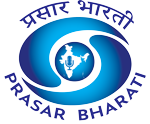Researchers at Osaka Metropolitan University have developed a promising new method to repair spinal fractures using stem cells extracted from adipose tissue — commonly known as body fat.
In animal studies, the treatment successfully healed spinal injuries in rats that mimic osteoporosis-related fractures seen in humans. By converting these fat-derived stem cells into bone-forming clusters and combining them with a bone-rebuilding material, researchers found that the rats regained stronger and healthier spines.
Because these stem cells are easy to collect — even from older adults — and cause minimal strain on the body, the technique could become a safe and minimally invasive alternative for treating bone diseases in humans.
A Safer Approach to Osteoporosis-Related Fractures
Osteoporosis weakens bones, making them fragile and more prone to fractures. In Japan, where the aging population continues to grow, the number of people affected by the disease is expected to surpass 15 million.
Among osteoporosis-related injuries, compression fractures of the spine — known as osteoporotic vertebral fractures — are the most common. These can cause long-term disability and severely reduce quality of life, underscoring the need for more effective and safer treatments.
How Fat-Derived Stem Cells Rebuild Bone
Stem cells derived from adipose tissue (ADSCs) have shown strong potential for bone repair. These multipotent cells can develop into various tissues, including bone. When cultivated into three-dimensional clusters called spheroids, their ability to promote tissue repair improves. Pre-differentiating these spheroids toward bone-forming cells further boosts their bone regeneration potential.
Led by graduate student Yuta Sawada and Dr. Shinji Takahashi, the Osaka team created bone-differentiated spheroids from ADSCs and combined them with β-tricalcium phosphate—a material widely used in bone reconstruction. When applied to rats with spinal fractures, the combination significantly improved bone healing and strength.
The researchers also noted increased activity in genes responsible for bone formation and regeneration, suggesting that the treatment stimulates the body’s natural healing mechanisms.
Promising Outlook for Future Treatments
“This study has revealed the potential of bone differentiation spheroids using ADSCs for the development of new treatments for spinal fractures,” said Sawada. “Since the cells are obtained from fat, there is little burden on the body, ensuring patient safety.”
Dr. Takahashi said, “This simple and effective method can treat even difficult fractures and may accelerate healing. We expect this technique to become a new treatment that helps extend the healthy life of patients.” The findings were published in Bone and Joint Research.
— ANI














